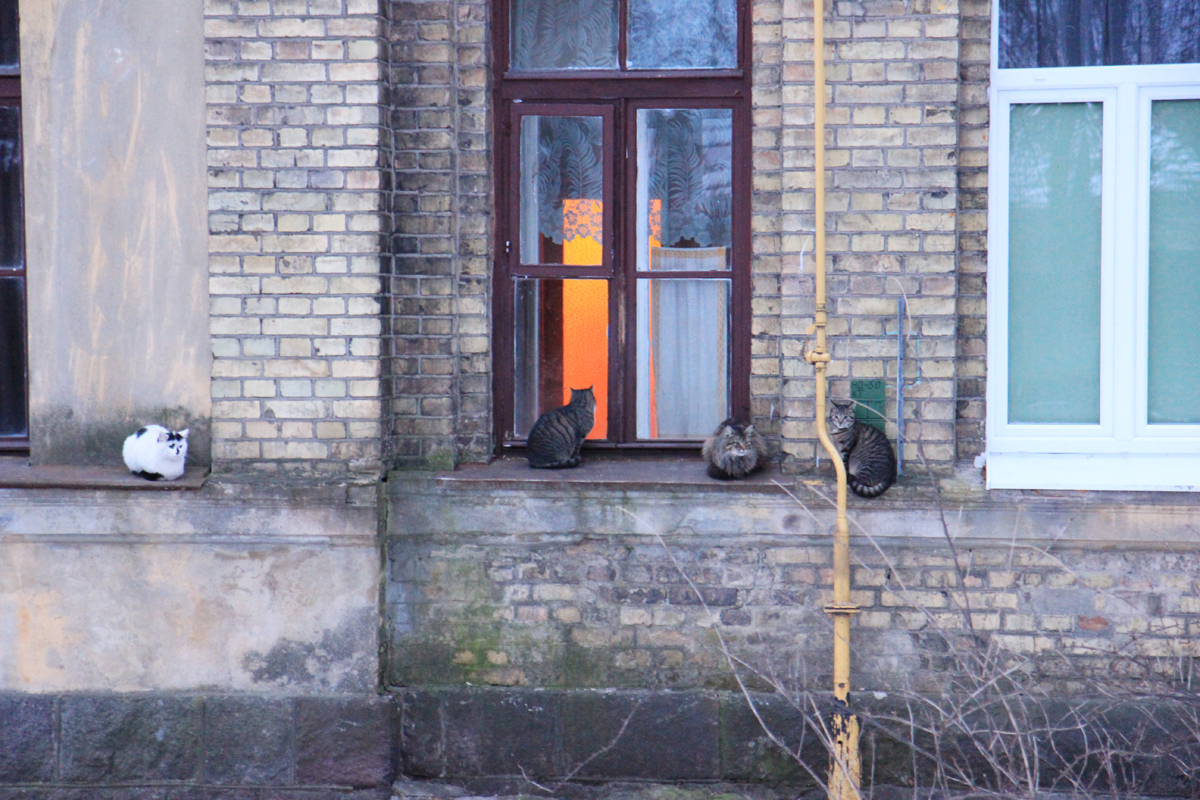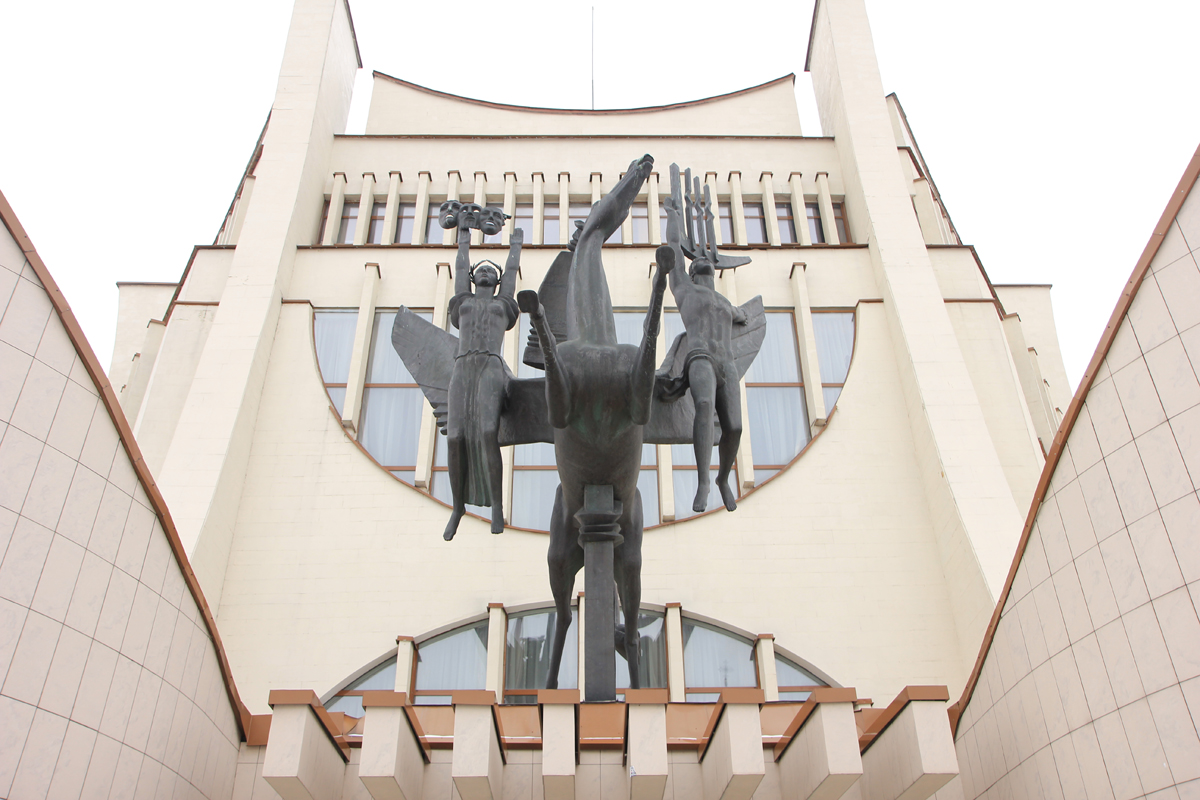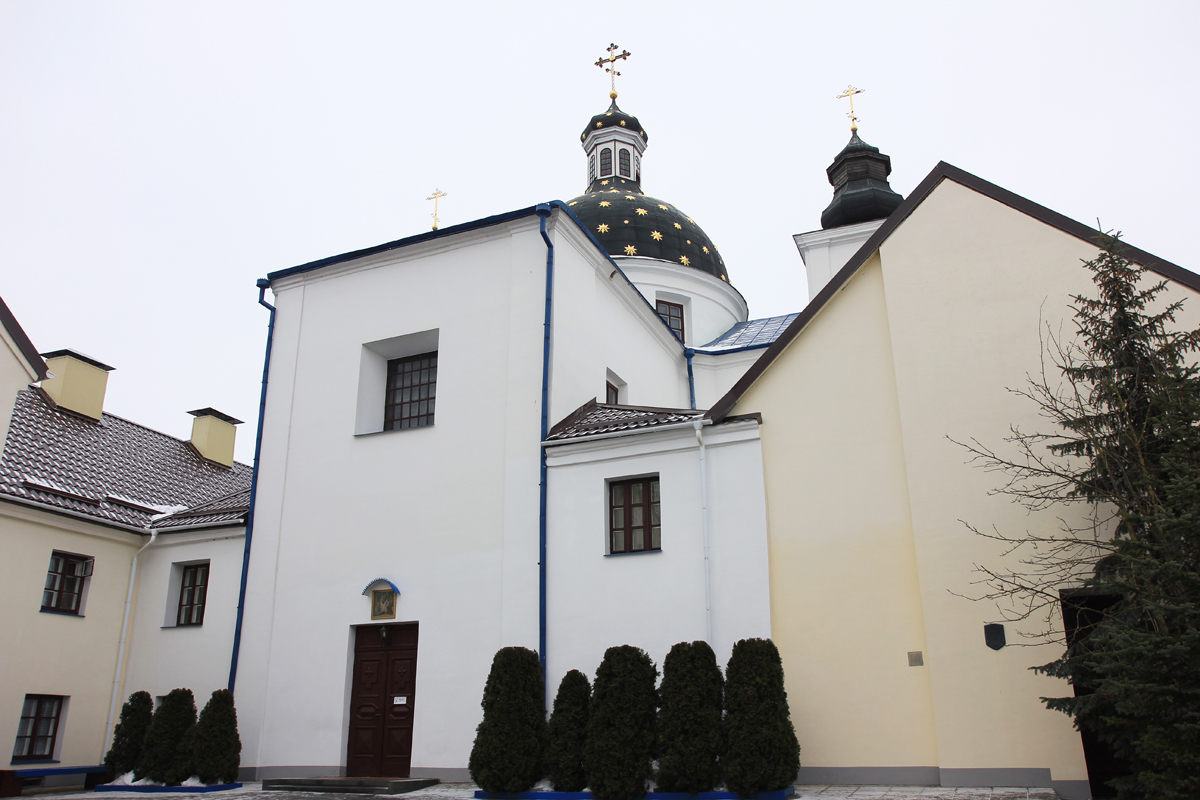First Impressions of Grodno – 02/2013
The city of Grodno, the administrative center of the Grodno region, has a population of over 300,000 people and was first mentioned in the 12th century (1128).
In February, I finally had the opportunity to visit Grodno. To be honest, I had never been to Grodno before, so it was particularly exciting to come here. The weather was not the best, but at least it was warmer than last year in Brest.
Upon arriving on an early dark winter morning, we were greeted by the railway station which was under reconstruction. The actual station was completely closed, there was no waiting room, and no signs to direct us. The few signs that were there only added to our confusion. There was a small makeshift building on the side that served as a replacement. It wasn’t the best start to our trip.
1. My first encounter with Grodno’s architecture was on Sverdlova street, where two water towers, Kasia and Basia, stand at the beginning. They were built at the turn of the 19th and 20th centuries.
2. One interesting feature of Grodno is that many residents like to add “tambours” to the sides of their homes. These are small structures that protrude from the main building and often have decorative elements such as columns and arches.
These tambours serve both functional and aesthetic purposes. They can provide extra space for storage or serve as a vestibule for entering the home. They also add visual interest to the building’s facade and contribute to the city’s unique architectural style.
3. The Palace of Culture for Textile Workers in Grodno has an impressive appearance from afar, but up close, the entrance doors are quite shabby. They are not what you would expect to see in a city of this size and importance.
Despite the unassuming entrance, the palace has a rich history and has played an important role in the city’s cultural scene. It was built in the Soviet era and served as a hub for textile workers to gather and participate in cultural activities.
4. Approaching the Old Castle, we decide to warm up by visiting the museum. The castle dates back to the 12th century and has undergone numerous demolitions and reconstructions. Its current appearance is somewhat Italianate, but due to the mixing and overlapping of architectural styles, it’s not so easy to determine. As we enter, we are immediately struck by the grandeur of the castle’s interior, with its towering walls and sweeping arches. Despite its tumultuous past, the castle still stands proudly as a testament to the region’s rich history and enduring spirit.
5. And this is already the New Castle. It was built in the 18th century (1737-1742) and served for a long time as a royal residence. Today, it houses an art gallery and various exhibitions showcasing the region’s rich history and culture.
6. Kolozhskaya Church (Sts. Boris and Gleb Church) was built in the 12th century, around 1180. It is one of the few remaining buildings from that ancient period, with no exact date of construction. Today, it serves as a beautiful example of early Slavic architecture.
7. This is the main rabbinical synagogue. It was presumably built in the 16th century and is currently undergoing restoration work. Despite its state of disrepair, the synagogue remains a testament to the rich cultural and religious history of the city.
8. Many buildings in the city are awaiting or undergoing reconstruction/sale, and therefore may not have the most attractive appearance. Almost all of them have plaques on their facades telling tales of historical significance and the illegality of causing damage. However, the reality often differs from what’s written on the signs.
9. The Church of the Nativity of the Blessed Virgin Mary was built between 1726 and 1751. Its architecture reflects the Baroque style, and its interior is decorated with beautiful frescoes and carvings. However, in the 1980s, the church was repurposed as a museum of atheism, and its sacred beauty was overshadowed by a display of anti-religious propaganda.






























Sorry, the comment form is closed at this time.